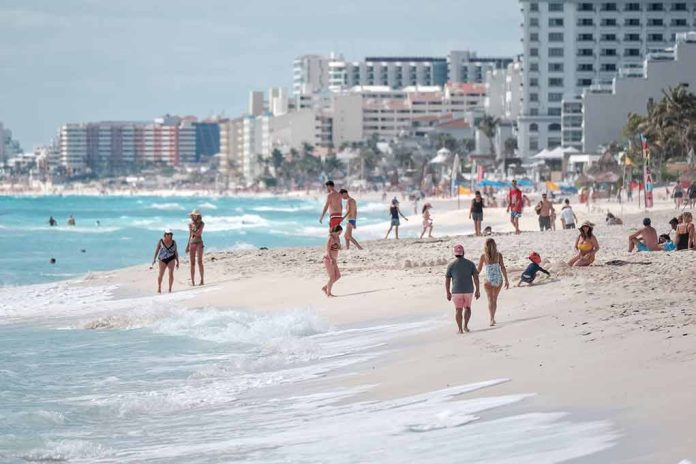🔴 Website 👉 https://u-s-news.com/
Telegram 👉 https://t.me/usnewscom_channel
Venomous Blue Sea Dragons wash up on North Carolina’s Outer Banks, prompting safety warnings for beachgoers.
At a Glance
- Blue Sea Dragons, small but highly venomous sea slugs, have been spotted on Outer Banks beaches
- These creatures, growing to about 1.3 inches, can deliver a powerful sting even when dead
- Cape Hatteras National Seashore officials warn visitors to admire from a distance and avoid touching
- Blue Sea Dragons concentrate venom from their prey, the Portuguese man o’ war, making their sting more potent
Tiny but Dangerous Visitors Arrive on North Carolina Shores
North Carolina’s famed Outer Banks are currently hosting some unexpected and potentially hazardous visitors. The Cape Hatteras National Seashore has issued a warning about sightings of Blue Sea Dragons (Glaucus atlanticus) washing up on the beaches. These small, vividly colored sea slugs may appear harmless, but they pack a venomous punch that has prompted officials to urge caution among beachgoers.
Blue Sea Dragons, also known as sea swallows or blue angels, typically inhabit the open waters of tropical and subtropical oceans. They can occasionally be stranded on beaches following strong winds, bringing them into contact with unsuspecting visitors. Despite their small size — growing to only about 1.3 inches in length — these creatures are causing quite a stir due to their potent venom.
A Venomous Defense Mechanism
What makes these tiny sea slugs so dangerous is their unique ability to concentrate venom from their prey. Blue Sea Dragons feed on the notorious Portuguese man o’ war, storing and concentrating its venom for their own defense. This remarkable adaptation results in a sting that can be even more powerful than that of their prey.
The Cape Hatteras National Seashore has taken to social media to spread awareness about these fascinating but dangerous creatures. They emphasize that the Blue Sea Dragons remain venomous even after death, making it crucial for beach visitors to exercise caution and refrain from touching them under any circumstances.
Admire from Afar: Safety Guidelines for Beachgoers
Park officials are advising visitors to enjoy the unique sight of these exotic creatures from a safe distance. The Blue Sea Dragons’ striking appearance—with their blue and silver coloration—can be alluring, but touching them can result in a painful and potentially dangerous sting.
While the presence of these venomous creatures may be concerning for some, it also presents a unique opportunity for beachgoers to observe a rare and fascinating species. The Blue Sea Dragons’ appearance on the Outer Banks serves as a reminder of the diverse and sometimes dangerous marine life that inhabits our oceans, and the importance of respecting wildlife from a safe distance.
